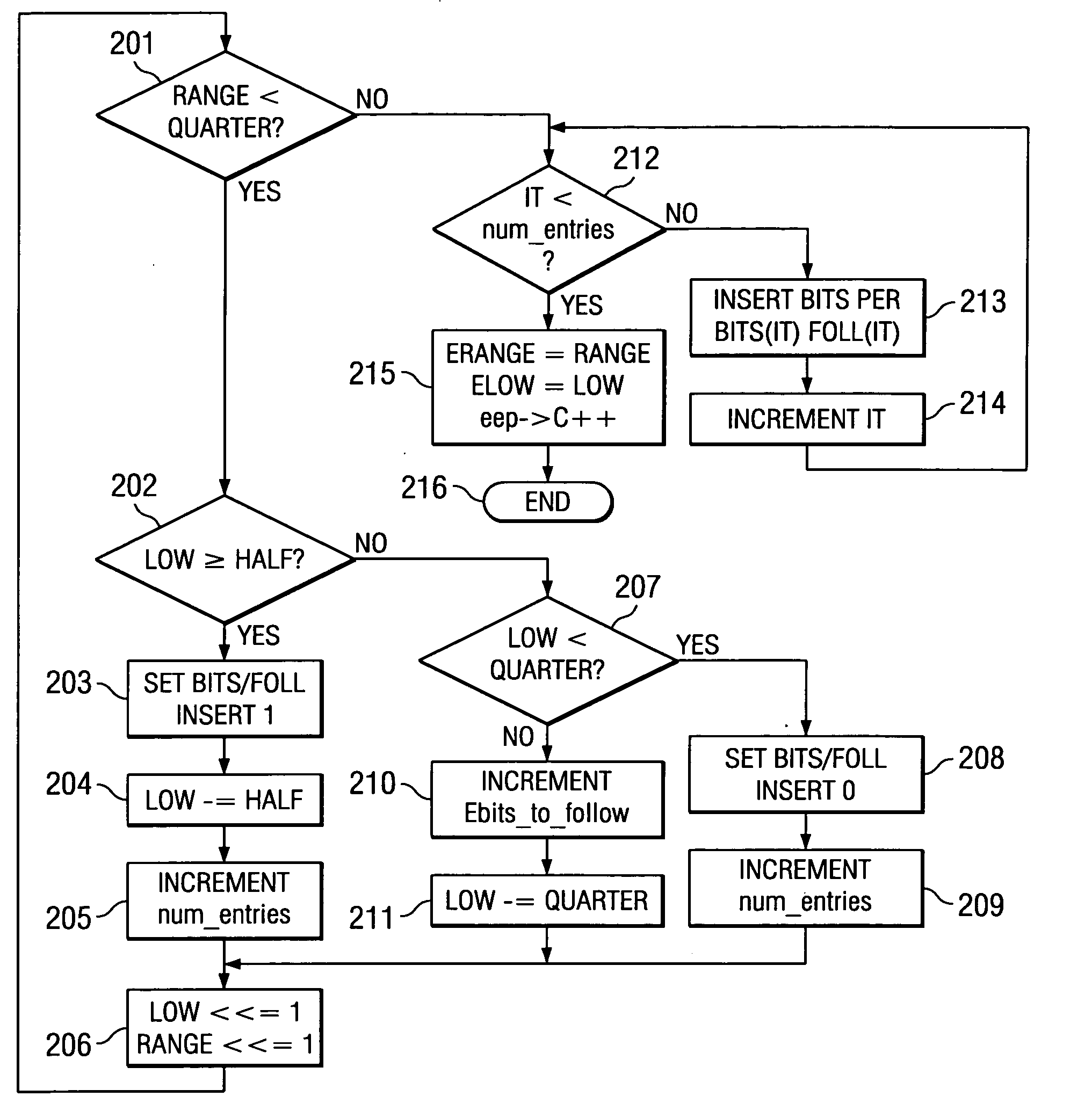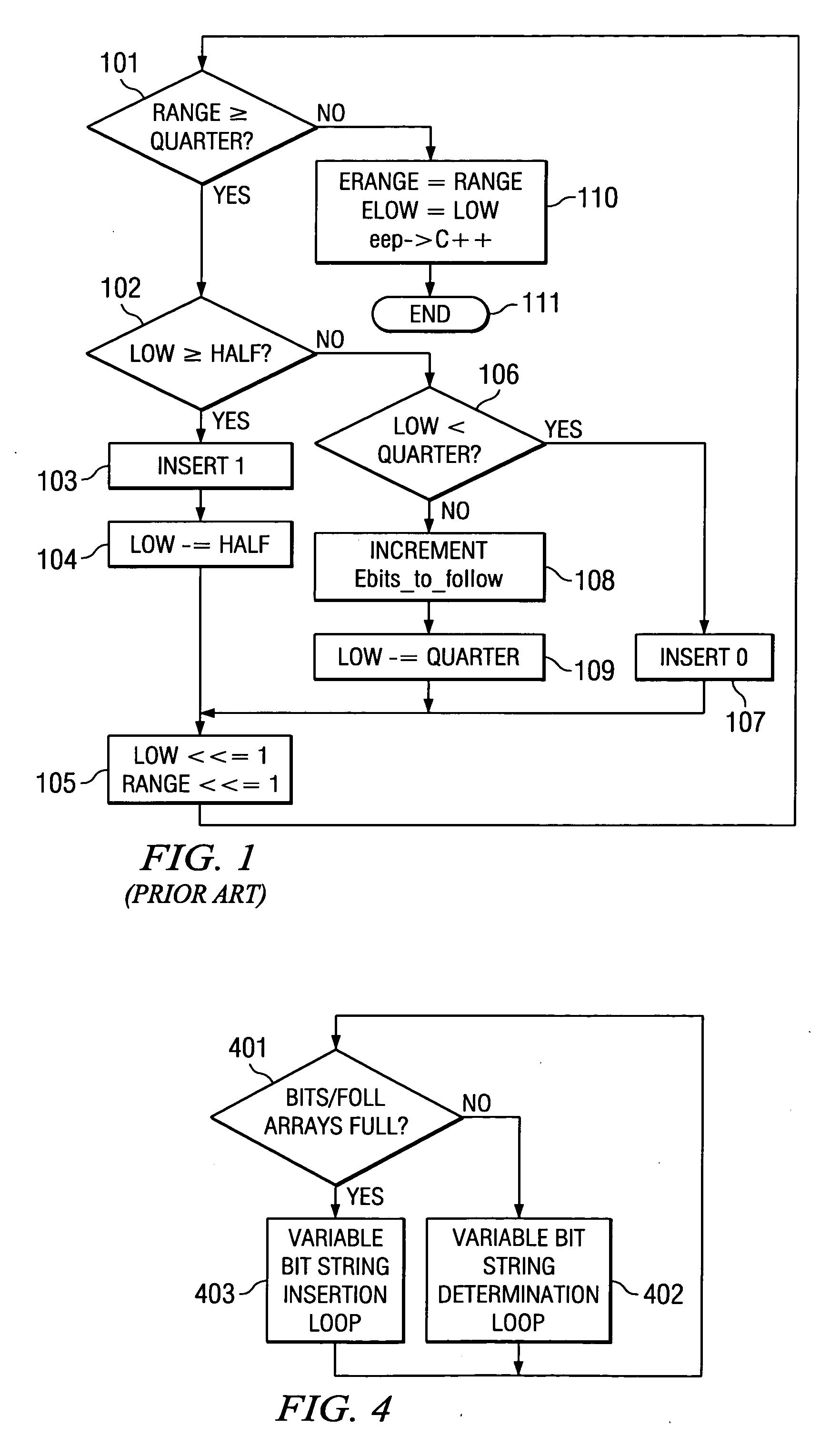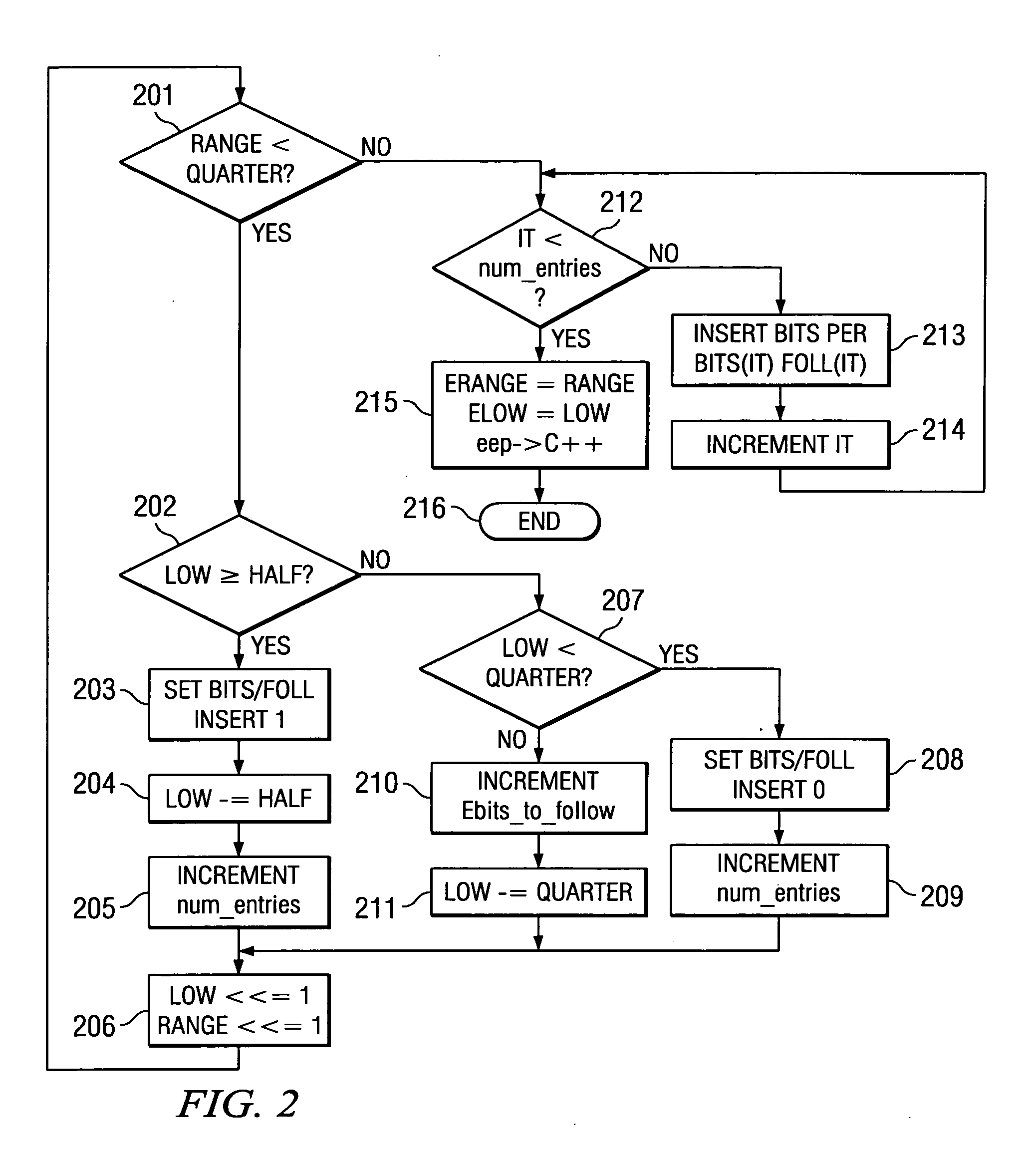Method of context based adaptive binary arithmetic encoding with decoupled range re-normalization and bit insertion
a data encoder and adaptive binary technology, applied in the field of data encoder using context-based adaptive binary encoder, can solve the problems of high computational intensity of previous implementations of this method on a digital signal processor (dsp) compared to huffman data encoder algorithm
- Summary
- Abstract
- Description
- Claims
- Application Information
AI Technical Summary
Benefits of technology
Problems solved by technology
Method used
Image
Examples
second embodiment
In this invention, the number of times the re-normalization loop will execute is computed by the formula:
num—iterations=lmbd(1,range)−lmbd(1,QUARTER)
where: lmbd is the leftmost bit detect for 1 or 0 depending on the first parameter. Thus the number of iterations (num_iterations) is the left most 1 of the range (lmbd(1, range)) minus the left most 1 of QUARTER (lmbd(1, QUARTER)). The original prior art code (FIG. 1) performed two things each loop. This prior art code doubled range every iteration when range was less than QUARTER. The prior art code also adjusted low and determined the bits to be inserted. Using the left most bit detect instruction to initially determine the number of times the re-normalization loop will iterate, the adjustment of range can be done in one step. Since QUARTER is a fixed constant depending on the number system selected, lmbd(1, QUARTER) can be pre-computed. For example in a Q10 number system, 1 would be represented as 1024 and QUARTER as 256. Placing ...
PUM
 Login to View More
Login to View More Abstract
Description
Claims
Application Information
 Login to View More
Login to View More - R&D
- Intellectual Property
- Life Sciences
- Materials
- Tech Scout
- Unparalleled Data Quality
- Higher Quality Content
- 60% Fewer Hallucinations
Browse by: Latest US Patents, China's latest patents, Technical Efficacy Thesaurus, Application Domain, Technology Topic, Popular Technical Reports.
© 2025 PatSnap. All rights reserved.Legal|Privacy policy|Modern Slavery Act Transparency Statement|Sitemap|About US| Contact US: help@patsnap.com



